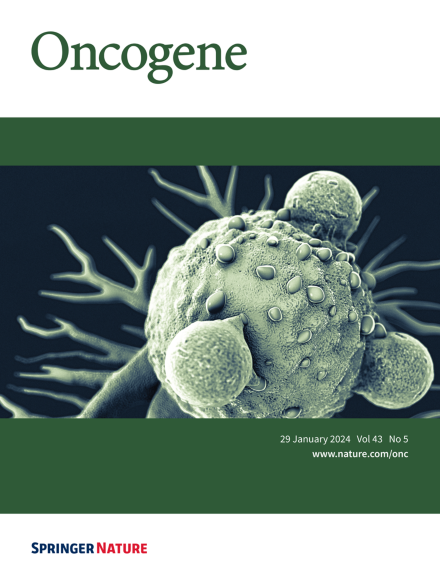靶向CLDN18.2的胰腺癌STAR-T细胞治疗:与CLDN18.2 CAR-T相比,一种最小化胃肿瘤外毒性的策略
IF 7.3
1区 医学
Q1 BIOCHEMISTRY & MOLECULAR BIOLOGY
引用次数: 0
摘要
cldn18亚型2 (CLDN18.2)主要在胃组织中表达,在胰腺癌(PC)中上调,是嵌合抗原受体T (CAR-T)细胞治疗等创新治疗的关键靶点。然而,由于CLDN18.2存在于正常胃粘膜中,CAR-T的有效性伴随着靶外肿瘤(OTOT)毒性的显著风险。为了解决这个问题,我们开发了cldn18.2特异性合成T细胞受体和抗原受体T (STAR-T)细胞。我们的研究表明,STAR-T和CAR-T细胞在体外具有相当的细胞毒性,但STAR-T细胞在体内引起的胃损伤较小,尽管其抗肿瘤作用比CAR-T细胞弱。胃镜临床试验证实了STAR-T细胞治疗的胃安全性,有效地控制了疾病。此外,在实验室和动物研究中,将IL12β p40亚基纳入STAR-T细胞可增强其功能。这一证据表明,CLDN18.2 STAR-T细胞可能是一种更安全的替代CAR-T细胞治疗PC的方法,值得进一步的临床试验。本文章由计算机程序翻译,如有差异,请以英文原文为准。

CLDN18.2-targeting STAR-T cell therapy for pancreatic cancer: a strategy to minimize gastric off-tumor toxicity compared to CLDN18.2 CAR-T
Claudin18 isoform 2 (CLDN18.2), primarily expressed in gastric tissue and upregulated in pancreatic cancer (PC), is a key target for innovative treatments like chimeric antigen receptor T (CAR-T) cell therapy. However, CAR-T’s effectiveness comes with a significant risk of on-target, off-tumor (OTOT) toxicity due to CLDN18.2’s presence in normal gastric mucosa. To address this, we developed CLDN18.2-specific synthetic T cell receptor and antigen receptor T (STAR-T) cells. Our research shows that STAR-T and CAR-T cells have comparable in vitro cytotoxicity, but STAR-T cells cause less gastric damage in vivo despite having weaker antitumor effects than CAR-T cells. Clinical tests with gastroscopes confirmed the gastric safety of STAR-T cell therapy, which effectively controlled the disease. Additionally, incorporating the IL12β p40 subunit into STAR-T cells enhanced their function in both lab and animal studies. This evidence suggests that CLDN18.2 STAR-T cell could be a safer alternative to CAR-T cell therapy for PC, meriting further clinical trials.
求助全文
通过发布文献求助,成功后即可免费获取论文全文。
去求助
来源期刊

Oncogene
医学-生化与分子生物学
CiteScore
15.30
自引率
1.20%
发文量
404
审稿时长
1 months
期刊介绍:
Oncogene is dedicated to advancing our understanding of cancer processes through the publication of exceptional research. The journal seeks to disseminate work that challenges conventional theories and contributes to establishing new paradigms in the etio-pathogenesis, diagnosis, treatment, or prevention of cancers. Emphasis is placed on research shedding light on processes driving metastatic spread and providing crucial insights into cancer biology beyond existing knowledge.
Areas covered include the cellular and molecular biology of cancer, resistance to cancer therapies, and the development of improved approaches to enhance survival. Oncogene spans the spectrum of cancer biology, from fundamental and theoretical work to translational, applied, and clinical research, including early and late Phase clinical trials, particularly those with biologic and translational endpoints.
 求助内容:
求助内容: 应助结果提醒方式:
应助结果提醒方式:


